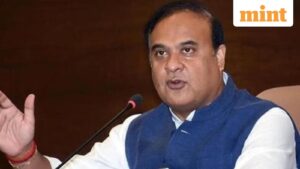The ongoing enthusiasm in the primary market is anticipated to persist, as indicated by the substantial number of new draft red herring prospectus (DRHP) applications being filed and considered by the market regulator, SEBI. At the end of last month, SEBI was reviewing 57 DRHP applications and had requested clarifications from an additional 19 companies that had already submitted their prospectuses, according to information from SEBI’s official website.
In the past week alone, 10 more companies filed papers with SEBI seeking listings on the main board. Additionally, the SME platforms of both BSE and NSE are examining IPO applications from 21 and 18 companies, respectively. This surge in public offerings is driven by large corporations looking to raise growth capital, even amid concerns regarding the sustainability of domestic growth, influenced by geopolitical tensions and strained U.S.-India relations.
The recent imposition of new tariffs and levies on H-1B visas by the U.S. has adversely affected several sectors, particularly the export-oriented IT services sector, which has already seen layoffs and a halt on new hiring. In response, the Indian government has implemented measures to stimulate domestic demand, including reducing GST on various products, increasing the DA allowances for Central government employees, and offering general income tax relief to salaried individuals.
In addition, the Reserve Bank of India (RBI) has reduced the repo rate by one percentage point to 5.50% in the first half of this year, with ample room for further cuts, as inflation rates remain considerably below the RBI’s target.
Despite these measures, the secondary equity markets have noticeably underperformed compared to global counterparts this year, marking one of its weakest performances in dollar terms in several years. However, valuations have become relatively appealing, and the outlook for a recovery in corporate earnings appears positive, bolstered by various fiscal and monetary policies.
Santosh Meena, Head of Research at Swastika Investmart, noted that abundant domestic liquidity has significantly contributed to the surge in IPO filings and DRHP submissions. Institutional investors, including mutual funds and insurance companies, along with a growing pool of retail investors, have been actively engaging in the market, creating a robust liquidity foundation for IPO activity.
“While global uncertainties persist—particularly regarding tariffs—I believe Indian markets are well-positioned for outperformance from this point forward. If foreign institutional investors return in response to potential U.S. rate cuts and a weaker dollar index, the momentum could accelerate meaningfully,” Meena remarked.
Historically, many large IPOs tend to coincide with market peaks, as high valuations facilitate new capital raising and attractive exits through offers for sale, according to Master Capital Services. Despite ongoing global uncertainties, including looming U.S. tariffs, the Indian market has demonstrated resilience, supported by government-led capital expenditures and enhanced consumption driven by GST rationalization and lower inflation.
Published on October 4, 2025.










